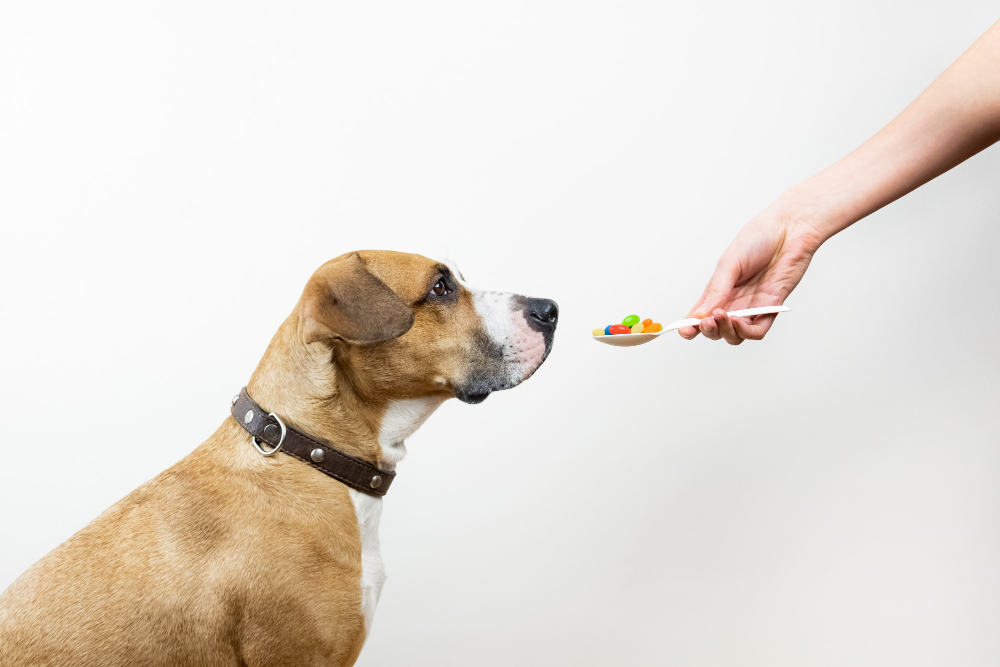As a responsible dog owner, it’s essential to understand the impact of treats on your pet’s health. With the vast array of options available in the market, it can be challenging to determine which treats are safe and appropriate for your dog. This comprehensive guide aims to answer commonly asked questions about dog treats and provide valuable information to help you make informed decisions.
Moderation is Key: The Impact of Daily Treats
Is it bad to give dogs treats every day? While treats can be an excellent way to reward your dog and reinforce positive behavior, giving them every day can lead to health issues such as obesity, dental problems, and dependency on treats for motivation. Moderation and portion control are crucial when providing treats, as excessive consumption can have adverse effects on your dog’s health. Before giving snacks to your dog, you should know the number of calories it should eat per day, for that, you can get information from a canine nutritionist or follow the daily portion recommendations that are on the packaging of the food you give to your dog.
If you’re looking for healthier alternatives to store-bought treats, consider making homemade treats like three-ingredient dog cookies. However, these snacks may look healthy, but you’ll have to calculate the amount of calories each serving has, and it’s not that simple. Therefore, always choose to give snacks that contain an indication of the daily amount that your dog can eat.
The Purpose of Treats and Alternative Reinforcement Methods
Do dogs really need treats? Treats serve several purposes, including training rewards, mental stimulation, and bonding with owners. However, dogs can still thrive without treats if owners use alternative reinforcement methods, such as praise, petting, and playtime.
If you notice your dog not eating treats, it could be due to health issues or pickiness. In such cases, it’s essential to consult your veterinarian to determine the underlying cause and discuss appropriate alternatives for positive reinforcement.
Treats to Avoid: Ensuring Your Dog’s Safety
What treats should you not give dogs? Some ingredients can be harmful or even toxic to dogs. When choosing treats, avoid those containing chocolate, xylitol, grapes, and raisins, as these can pose serious health risks. Additionally, be cautious with rawhide chews and cooked bones, as they can splinter and cause choking or digestive issues.
To ensure your dog’s safety, opt for healthier treat alternatives, such as dehydrated meat, fresh fruit, and vegetables (e.g., apples, carrots, and green beans). Remember to consult your veterinarian for personalized recommendations based on your dog’s dietary needs and preferences.
The Downside of Dog Treats: Potential Health Risks
Why are dog treats bad for dogs? While not all treats are harmful, some can negatively impact your dog’s health when given excessively or without proper supervision. Obesity, dental issues, and food allergies are common concerns related to the overconsumption of treats.
When a dog eats too many treats, it could lead to gastrointestinal distress, diarrhea, and even pancreatitis. To prevent such issues, monitor your dog’s treat intake and ensure they are given in moderation.
Striking the Right Balance: Treats and Nutrition
Many dog owners wonder if it’s okay to let their dogs eat biscuits or cookies as treats. While these snacks can be suitable rewards, it’s crucial to maintain a balance between treats and your dog’s regular diet to ensure proper nutrition.
When selecting treats, consider factors like your dog’s size, age, and activity level. Opt for treats that are low in calories and made with high-quality ingredients. Additionally, ensure that treats make up no more than 10% of your dog’s daily caloric intake.
Picking the Right Treats for Your Dog
When selecting treats for your dog, it’s essential to consider the size, age, activity level, and dietary restrictions of your pet. Here are some tips to help you choose the best treats for your dog:
- Prioritize high-quality ingredients: Look for treats made with natural, wholesome ingredients, and avoid those containing artificial preservatives, colors, or flavors.
- Opt for low-calorie treats: To prevent obesity and other health issues, choose treats with low caloric content. This is particularly important if your dog is prone to weight gain or has a sedentary lifestyle.
- Consider your dog’s size and chewing habits: Treats that are too small or too hard may pose choking hazards or cause dental damage, especially for large dogs or aggressive chewers. Choose treats appropriate for your dog’s size and chewing style.
- Look for treats with added health benefits: Some treats are formulated to support specific aspects of your dog’s health, such as dental chews that help reduce plaque and tartar buildup or treats fortified with essential vitamins and minerals.
- Be mindful of allergies and dietary restrictions: If your dog has a food allergy or sensitivity, carefully read the ingredients list to ensure the treats are safe for consumption. Consult your veterinarian for recommendations tailored to your dog’s specific needs.
- Give bones to your dog: Bones are an excellent option for snacks and environmental enrichment!
Conclusion
In summary, moderation and informed decision-making are key when it comes to providing treats for your dog. Be cautious with ingredients, portion sizes, and the frequency of treat distribution to ensure your dog’s health and well-being. Always consult your veterinarian if you have concerns about your dog’s treat consumption or overall health. By following these guidelines, you can keep your furry friend happy and healthy while still enjoying the occasional tasty treat.

